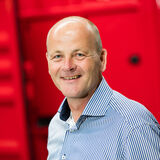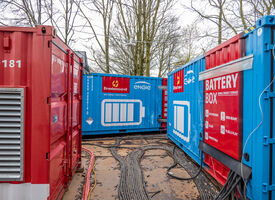Stage V for NRMM: a big step towards cleaner energy
As of January 2020 all newly built gensets must comply to the requirements of Stage V for NRMM (non road mobile machinery). This means the current fleet of gensets may still be used, but all newly built gensets must comply to the Stage V standard. This article will cover the contents of Stage V and the latest developments concerning gensets.
NRMM emission regulation
The rules concerning the emissions of diesel gensets are constantly growing stricter. The leading norm in Europe is the European NRMM emission standard. By means of this standard the requirements diesel gensets must meet are gradually stepped up. The European NRMM emission standard applies to gensets too.
Since the majority of diesel engines are used for transport, most manufacturers focus on developing and testing engines intended for applications in this sector. For road transport the Euro VI, the emission standard applying to all transport, is already in use. For NRMM applications, such as maritime transport and gensets, developing engines that can comply to Stage V is still in progress. Here too the focus lies mainly on transport; many engine manufacturers focus primarily on developing and testing Euro VI engines for trucks. Translating the developments towards gensets won’t be done until after this, which is why this progress typically takes longer.

Stage V and gensets
The complexity of using engines in gensets rather than trucks lies in the method of use. While a truck engine is usually loaded quite consistently, a genset’s load varies a lot. This influences the SCR (Selective Catalytic Reduction) and, if applicable, the soot filters that must be built into Stage V engines. These typically benefit from a consistent, heavy load.
Stage V and soot emission
Most Stage V gensets have a soot filter built in by default to reduce soot emission. Bredenoord’s soot filters catch the soot particles and incinerate them completely, which reduces soot emission by up to 99.9%. Most soot filters are self-cleaning, on condition that the genset is loaded sufficiently. If a genset’s load is not high enough the genset won’t reach the required temperature, which could result in a blocked soot filter. This can be resolved by allowing the soot filter to regenerate, by briefly subjecting the engine to a heavy load (thus allowing it to run very warm). After a while the soot filter will be clean again.

Stage V and NOx emission
To meet the Stage V norm regarding NOx emissions, the exhaust fumes are subjected to an AdBlue treatment. AdBlue is a liquid consisting of demineralized water and urea. By injecting this into the exhaust fumes, a large part of the nitrogen oxides are converted into pure oxygen and water vapor, two harmless substances that are naturally present in our air.
This addition to a genset requires regular refills of AdBlue, in addition to its fuel refills. The genset will stop running if the AdBlue tank is starting to run low. The regulations require this, to ensure people cannot deliberately continue working without reducing the NOx emission to comply to the norm.
AdBlue presents an additional challenge in the development of engines. The fluid is corrosive, and as such it is of utmost importance to select the right materials and accurately estimate the required amount of AdBlue per situation.
Stage V and Bredenoord
Stage V developments are in full swing at Bredenoord. Do local regulations require you to meet soot and NOx limits that are in line with the Stage V requirements? Then we can offer you a hybrid combination (for example, including the Battery Box or solar energy) or a soot filter and SCR-installation added to a Stage IIIA genset. These solutions will allow you to comply to the Stage V standard. Bredenoord will gladly help you find the low emission solution that best suits your energy demand.





-c01f2eed9f.svg)



